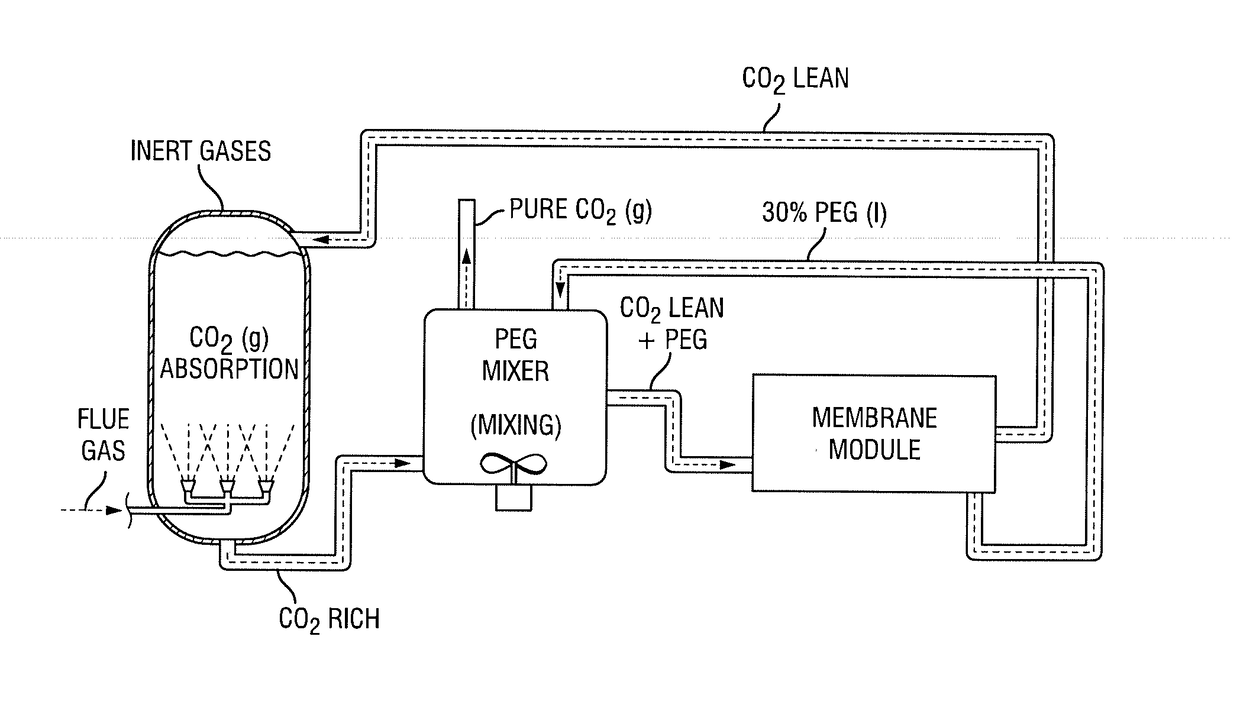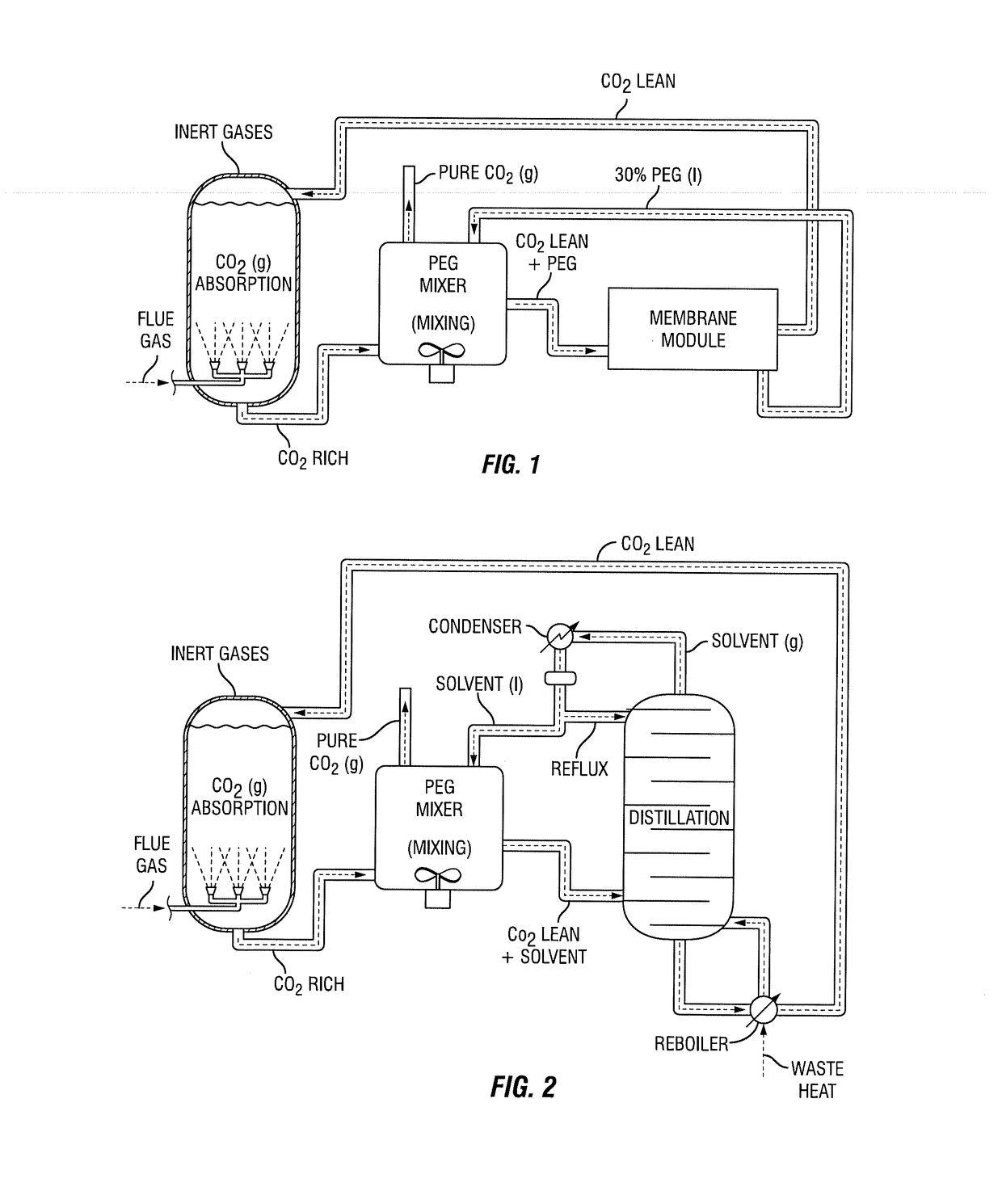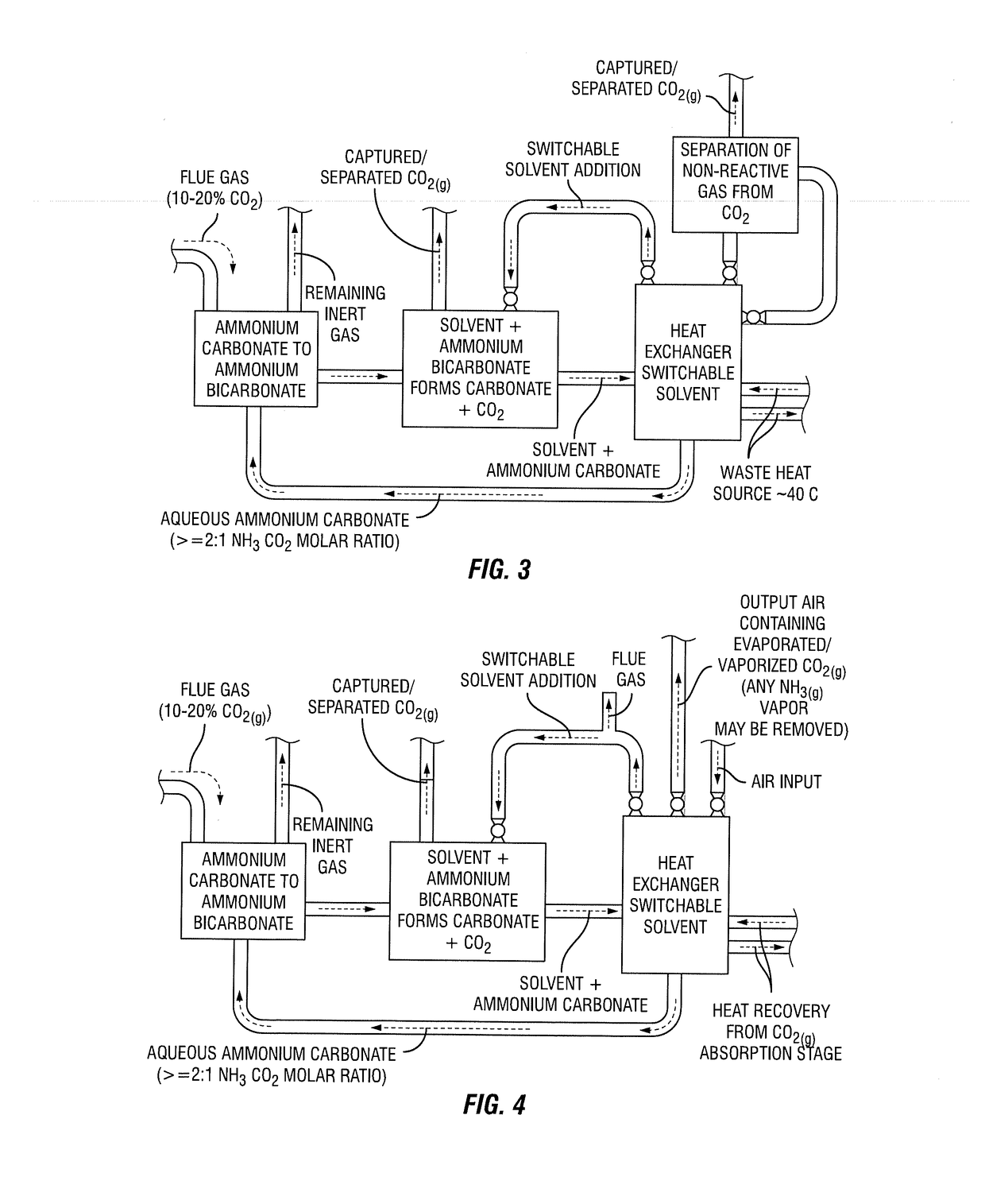Integrated process for capturing carbon dioxide
a carbon dioxide and integrated technology, applied in the field of integrated process for capturing carbon dioxide, can solve the problems of increasing electricity costs by over 70% in some cases, and the implementation of these technologies, such as the chilled ammonia and monoethanolamine carbon capture process, has been limited to pilot plants, so as to reduce co2 emissions, increase electricity costs, and reduce operating and capital costs
- Summary
- Abstract
- Description
- Claims
- Application Information
AI Technical Summary
Benefits of technology
Problems solved by technology
Method used
Image
Examples
example 1
[0275]A water soluble substance is added at a moderate or cool temperature, such as at room temperature, in the CO2 desorption stage and gaseous CO2 is desorbed. After at least a significant portion, such as less than any of the following: 5%, or 10%, or 15%, or 20%, or 25%, or 30%, or 35%, or 40%, or 45%, or 50% of the CO2 in solution, is desorbed, heat may be applied to the mixed desorption solution in a separate or the same reactor or reactors. It may also be desirable for heat to be applied when the CO2 desorption rate due to the presence of the soluble substance has appreciably subsided, such as the CO2 desorption rate subsiding to less than any of the following: 95%, or 90%, or 75%, or 60%, or 50% or 40%, or 30%, or 20%, or 10% of the maximum CO2 desorption rate after soluble substance injection. The application of heat may enhance CO2(g) desorption. The temperature and energy requirements for thermal desorption may be significantly less than conventional thermal desorption pr...
example 2
[0276]The water-soluble substance is added to the CO2-rich solution in the CO2 desorption stage and heat is applied to the solution during most the CO2 desorption timeframe. Depending on the concentration of the added substance, the rate and temperature of heat input, residence time, the rate of mixing and other factors, the initial CO2 desorption may be primarily due to the influence of the soluble substance. During this initial timeframe, the heat may, include, but not be limited to, increase the rate of CO2 desorption or facilitate CO2 desorption. Depending on many factors, the influence of heat application on CO2 desorption may increase over time and the influence of the added substance may subside. It may be desirable for the added substance in this example to be relatively non-volatile and not prone to substantial thermal degradation. Such substances, include, but are not limited to, PEGs and PPGs.
example 3
[0277]In embodiments where the added substance is recovered using heat, such as embodiments with various forms of distillation or switchable solvent, or where heat is applied during soluble substance recovery, such as may be the case in membrane-based recovery embodiments, CO2(g) may be desorbed. This CO2 desorption may be in part due to thermal decomposition. This CO2 may be recovered and utilized in a similar manner to the CO2 desorption during the CO2 desorption stage.
Soluble Substance Addition Carbon Capture with ‘Salting-Out’ Solvent Recovery
[0278]The embodiments described below include those shown in FIG. 6.
[0279]In this embodiment, following soluble substance addition, CO2(g) is generated until the NH3:CO2 molar ratio in the aqueous solution is sufficient to prompt ‘salting-out’ or the formation of a multi-layer solution. This NH3:CO2 molar ratio may be greater than 1.5:1. The presence of aqueous ammonium carbamate species may facilitate the formation of a two layer solution....
PUM
| Property | Measurement | Unit |
|---|---|---|
| molecular weight | aaaaa | aaaaa |
| vapor pressure | aaaaa | aaaaa |
| molecular weight | aaaaa | aaaaa |
Abstract
Description
Claims
Application Information
 Login to View More
Login to View More - R&D
- Intellectual Property
- Life Sciences
- Materials
- Tech Scout
- Unparalleled Data Quality
- Higher Quality Content
- 60% Fewer Hallucinations
Browse by: Latest US Patents, China's latest patents, Technical Efficacy Thesaurus, Application Domain, Technology Topic, Popular Technical Reports.
© 2025 PatSnap. All rights reserved.Legal|Privacy policy|Modern Slavery Act Transparency Statement|Sitemap|About US| Contact US: help@patsnap.com



